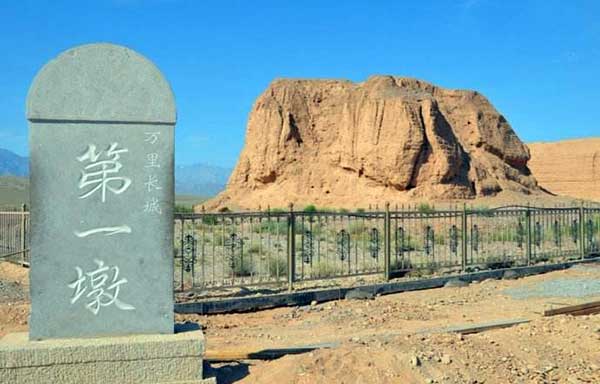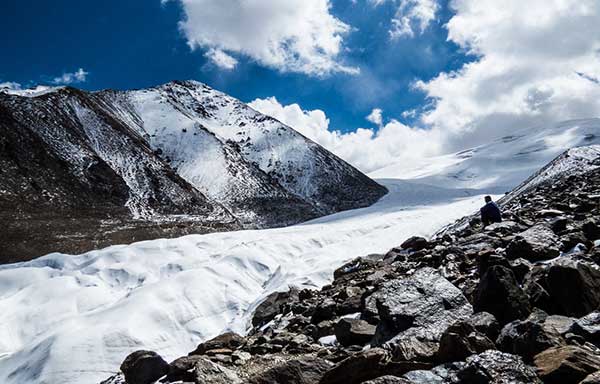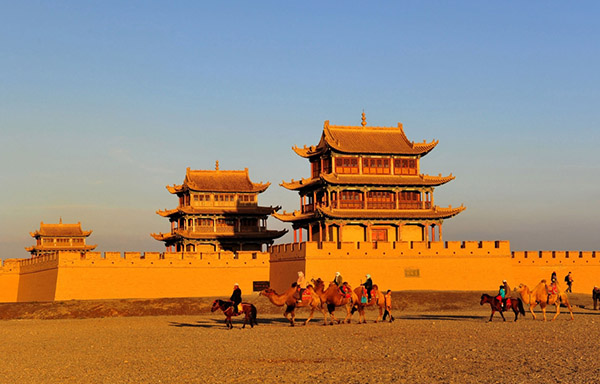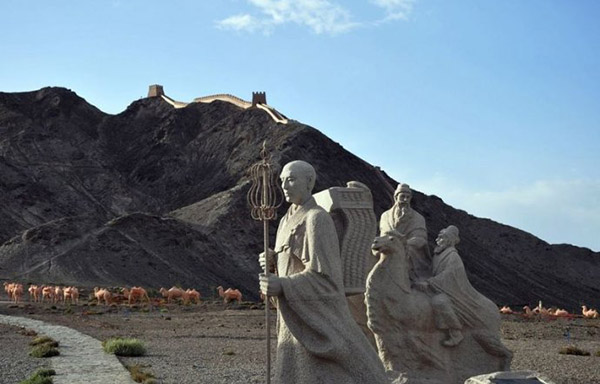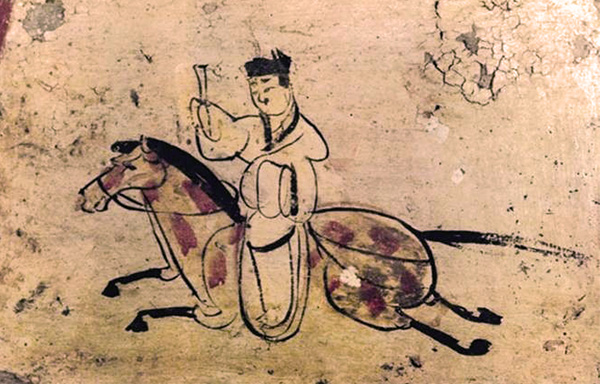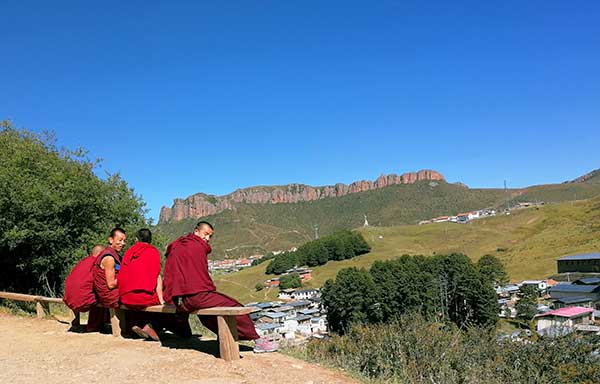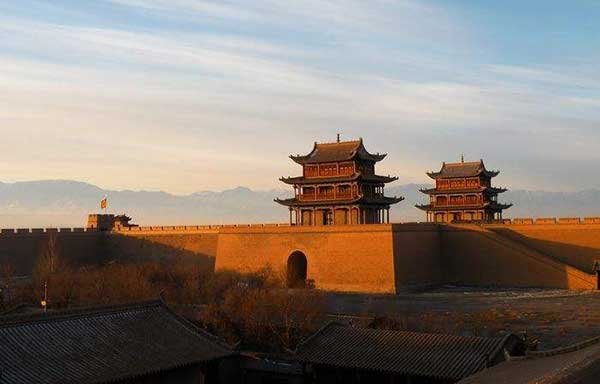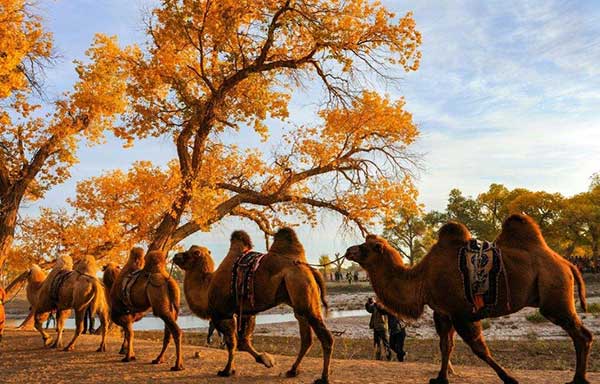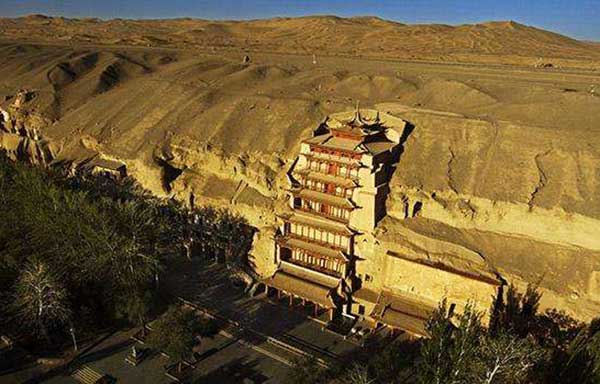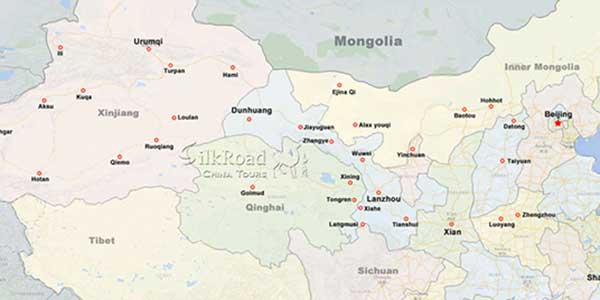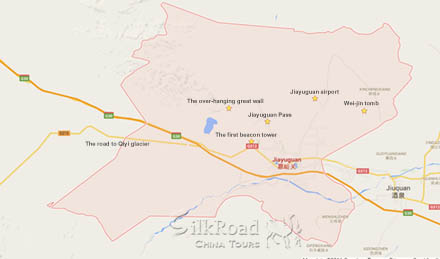 Located about 15 kilometers northeast of Jiayuguan, Wei-Jin Mural Brick Tomb is a big tomb group with over 1,400 tombs built between the 3rd Century and 5th Century during the Wei and Jin dynasties.
Located about 15 kilometers northeast of Jiayuguan, Wei-Jin Mural Brick Tomb is a big tomb group with over 1,400 tombs built between the 3rd Century and 5th Century during the Wei and Jin dynasties.
Renowned as the largest subterranean art gallery in the world, housing a great deal of colorful murals, the gallery has attracted tourists from both home and abroad since 1972 when it was excavated. Most tombs are of families, housing bodies of three or four generations, and now only Grave 6 and Grave 7 are open for tourism.
Entering the cold stone tomb, you will marvel at the vivid murals and special layout inside. Each Wei-Jin tomb generally has two or three chambers which are connected by corridors paved with tiles in various flower patterns. The gate was decorated with delicate patterns and easy lines symbolizing clouds, water, fire, gods and weird animals. The exquisite murals on the inner chamber walls tell the master and mistress's contemporary carefree life, and servant's hard working one. Most reflect the political, cultural, military, and scientific developments of the Wei and Jin Dynasties, giving an insight into this ancient Chinese feudal society. Mainly painted realistically and earlier than Mogao Grottoes, Wei-Jin Art Gallery provides an example of unmixed Chinese realism art - filling in gaps in the fields of painting between the Wei and Jin periods, and so considered highly valuable for historic research.
Here we introduce you an outstanding representation of these delicate brick murals – 'Postman', which was excavated from the Grave 5.
China is one of the countries which are the earliest to start and develop post. According to the records found from the oracle script carved on tortoise shells or animal bones during the Shang Dynasty (16th - 11th century BC), there was post but only for military use at that time. Some private and official post offices appeared in the following dynasties. Qin Shi Huang established national posthouses in the Qin Dynasty. Later in the Han Dynasty, China started to have mail communication with the western world.
The mural 'Postman' had vividly portrayed the real post situation in ancient China. On the mural, a skilled postman sits on the back of a galloping horse. He has a letter in one hand and the halter in the other hand, hastening the horse to run faster. The horse has all its four hoofs in the air and its tail aflutter. You can see the speed from the mural. At this moment, you may have many thoughts flash across your mind. Was the war situation urgent? Was the information carried by the letter crucial? Did the postman want to hurry to the next posthouse before the night fell? No answers. You can only imagine the prosperity of the country's ancient post.
Gallery
Attractions in the area
Related Tours
General Information
Alias: No
Loc: 20 km from Jiayuguan
Entrance: 31 RMB
Open Time: 8:30 - 5:30
Relevant blogs
-
How did the name of Tianshui in Gansu come about?
The name Tianshui is very pleasant to the ear, and it reminds one of that exquisitely beautiful verse, "After getting drunk, one doesn't know if the sky is in
-
The 8th Silk Road Hotel Festival was successfully held i
On December 27th, the "8th Silk Road Hotel Festival" grandly opened at the Yujing International Hotel in Zhangye. This hotel festival gathered industry experts,
-
The Karez Irrigation System in Turpan has been selected
On September 3rd, at the 75th Executive Council Meeting of the International Commission on Irrigation and Drainage held in Sydney, Australia, the 2024 (11th bat
-
What is the connection between "dragons" and "snakes
In traditional Chinese culture, the snake has a dual identity of auspiciousness and danger. Ancient people believed that the snake not only possesses divine cha
-
Endangered Przewalski's Horses Spotted at Dunhuang Yume
<p>In early February, a group of special "visitors"—the Przewalski's horses—appeared at the Dunhuang Yumen Pass scenic area in Gansu Province, a U
-
The Fourth Dunhuang Cultural Tourism Supplier Conference
On the morning of February 18th, the Fourth Dunhuang Cultural Tourism Supplier Conference in Northwest China commenced at the Dunhuang International Convention






